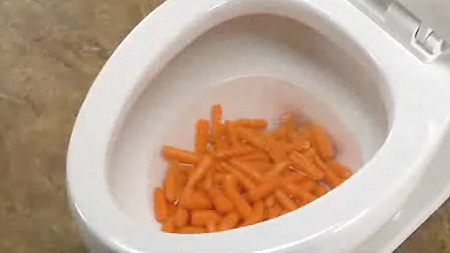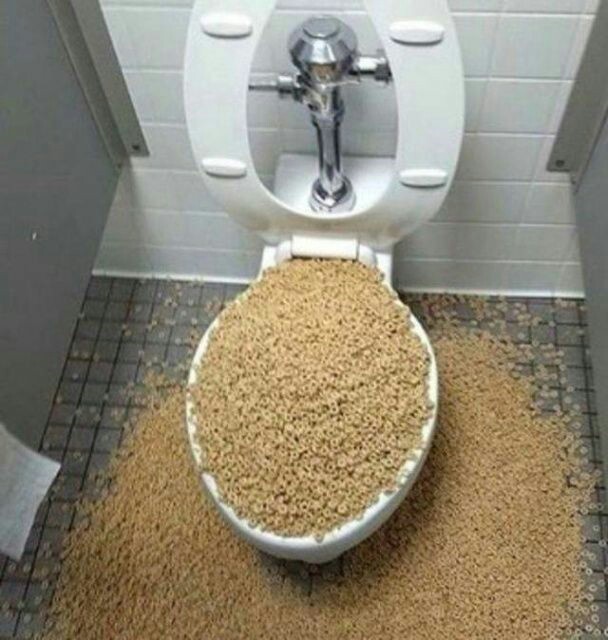Is it Common to Flush Food in the Toilet?
Is it Common to Flush Food in the Toilet?
Blog Article
What are your opinions on Think Twice Before Flushing Food Down Your Toilet?

Introduction
Many individuals are usually confronted with the issue of what to do with food waste, particularly when it involves leftovers or scraps. One usual inquiry that develops is whether it's fine to purge food down the bathroom. In this article, we'll look into the reasons that people might consider purging food, the consequences of doing so, and different techniques for appropriate disposal.
Reasons why people might consider flushing food
Absence of awareness
Some people might not know the possible damage caused by purging food down the toilet. They might wrongly think that it's a harmless practice.
Comfort
Flushing food down the toilet might appear like a fast and easy service to disposing of unwanted scraps, particularly when there's no neighboring trash can available.
Idleness
In some cases, individuals might simply pick to flush food out of sheer negligence, without considering the effects of their actions.
Repercussions of flushing food down the toilet
Ecological effect
Food waste that winds up in waterways can add to contamination and damage marine communities. Furthermore, the water utilized to flush food can strain water resources.
Plumbing issues
Purging food can cause stopped up pipes and drains pipes, triggering expensive pipes fixings and aggravations.
Sorts of food that must not be purged
Coarse foods
Foods with fibrous structures such as celery or corn husks can obtain entangled in pipes and create obstructions.
Starchy foods
Starchy foods like pasta and rice can absorb water and swell, bring about blockages in pipes.
Oils and fats
Greasy foods like bacon or cooking oils ought to never be purged down the toilet as they can strengthen and trigger obstructions.
Appropriate disposal methods for food waste
Using a waste disposal unit
For homes geared up with waste disposal unit, food scraps can be ground up and flushed with the plumbing system. However, not all foods are suitable for disposal in this manner.
Recycling
Specific food product packaging products can be recycled, minimizing waste and minimizing environmental impact.
Composting
Composting is an environment-friendly means to throw away food waste. Organic products can be composted and utilized to enrich soil for gardening.
The importance of correct waste monitoring
Lowering ecological damage
Proper waste management techniques, such as composting and recycling, assistance minimize pollution and protect natural resources for future generations.
Protecting pipes systems
By staying clear of the technique of flushing food down the bathroom, home owners can protect against pricey pipes repair work and preserve the honesty of their pipes systems.
Verdict
In conclusion, while it may be appealing to flush food down the toilet for ease, it is essential to comprehend the possible consequences of this action. By embracing appropriate waste administration techniques and taking care of food waste sensibly, individuals can contribute to healthier pipes systems and a cleaner environment for all.
FLUSH FOOD DOWN THE TOILET?
FLUSHING FOOD CAN CAUSE BLOCKED DRAINS IN YOUR HOME
All of the plumbing fixtures in your home are connected to the same sewer pipe outside of your home. This outdoor sewer pipe is responsible for transporting all the wastewater from your home to the Council sewer mains. Even small pieces of food that go down the kitchen sink can cause problems for your sewer. It should therefore be obvious that flushing larger bits of food, such as meat, risks a clog in either the toilet itself or the sewer pipes. Flushing greasy food is even more problematic because oil coagulates when it cools, coating the interior lining of your pipes.
THE TOILET IS NOT A BIN
Food isn’t the only thing that people shouldn’t be flushing down the toilet. People use the toilet to dispose of all kinds of things such as tampons, makeup wipes, dental floss, kitty litter and even underwear. Water goes to great lengths to educate residents about the high costs and stress placed on wastewater treatment systems simply from people flushing the wrong stuff down the toilet. It costs taxpayers millions of dollars each year, and homeowners thousands in blocked drain repairs.
FLUSHING FOOD IS A WASTE OF WATER
Flushing food is a waste of our most precious resource - water. In June this year Level 1 water restrictions were introduced to protect water supply from drought conditions. Much of New South Wales continues to be affected by prolonged drought with recent figures revealing up to 97 per cent of the state remains in drought. Depending on whether you have a single or dual flush toilet, every single flush uses between five and 11 litres of water. In the current climate this is a huge amount of water to be wasting on flushing food that should be placed in the bin (or better yet, the compost).
https://www.jabplumbingsolutions.com.au/blog/can-you-flush-food-down-the-toilet

We are very inquisitive about and I hope you appreciated the new post. Enjoyed our post? Please share it. Let someone else check it out. Thanks for taking the time to read it.
Estimate Report this page